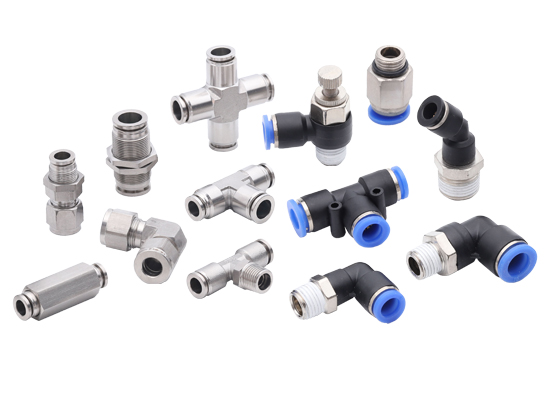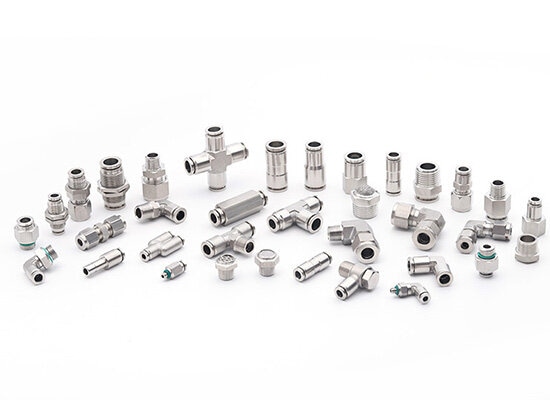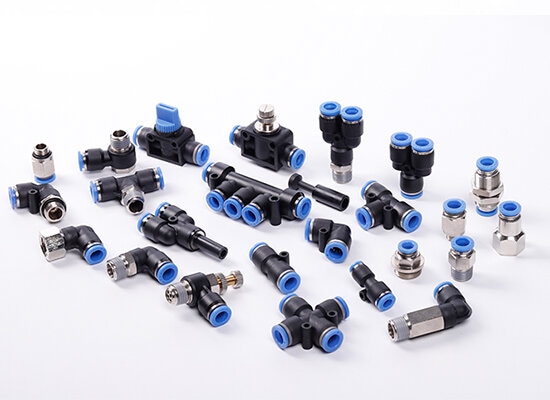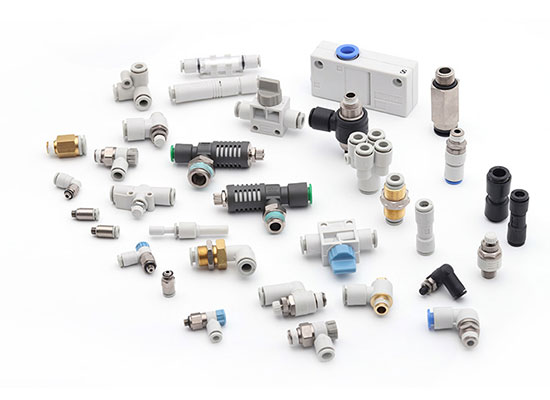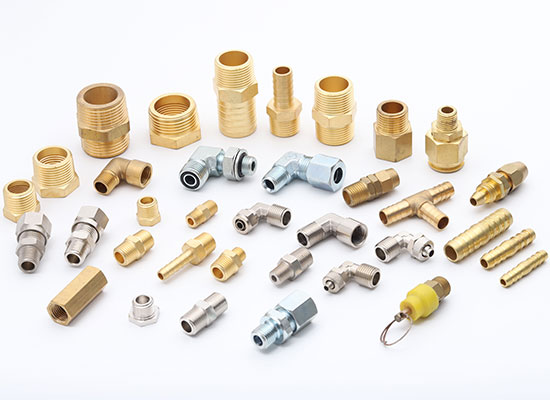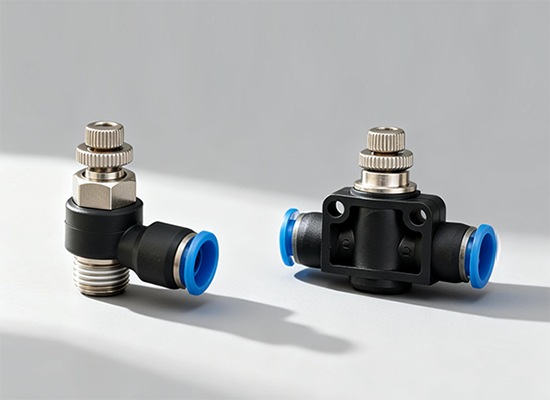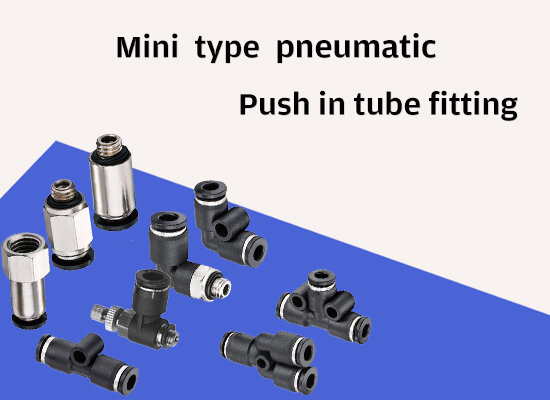What is Pnuematic Push in fitting?
Pneumatic push in fittings are a kind of pneumatic fittings,as known as push in fittings.As a connector between pipelines and different accessories in pneumatic systems.Since there are no male or female connectors, pneumatic tubing is inserted directly and locked in place by a claw mechanism, making it the most convenient type of pneumatic fitting.
Characteristics of Pneumatic push in Fitting
Pneumatic push in Fittings have a series of advantages such as easy operation, low cost, no air leakage, stable connection, multiple types, and wide applicability.
◆ Easy to operate
◆ Low maintenance cost
◆ Not easy to leak,safety
◆ steady connection
◆ Available in multiple types, sizes and colors
Compared with other fittings, pneumatic fittings have various advantages such as improving system efficiency, extending equipment life, reducing maintenance costs, and enhancing safety.
Common Material types of Pneumatic push in Fitting
The material of pneumatic fittings directly affects their performance and durability. Common materials include brass、stainless steel、plastic、aluminum alloy ,and the different fields applicable to each material.
Brass: With excellent corrosion resistance and strength, it is one of the most common materials for pneumatic fittings.
Stainless Steel: Suitable for extreme environments, high temperature resistance, corrosion resistance, widely used in fields such as food and medicine.
Plastic: Lightweight and corrosion-resistant, suitable for low-pressure pneumatic systems.
Aluminum alloy: lightweight, corrosion-resistant, suitable for use in medium pressure pneumatic systems.
And the applicable fields for each material's pneumatic fittings are also different. When applying pneumatic fittings, we should pay attention to the material of the fittings.
Categories of Pneumatic Push In Fitting
Pneumatic Push in Fitting has the following types, including general standard, SMC standard, all stainless steel, brass, nickel plated brass, etc. There are some distinctions in function and structure:
For stainless steel pneumatic push in fitting, its body, thread, button and reed are allmade of stainless steel, usually 304, 316 or 316L. Thesealing ring inside is FKM (fluorine or viton).
They can be used in chemically corrosive environments such as strong acid and akal, and can also be used in high temperature andhigh pressure conditions.
The maximum working temperature is 200 degrees Celsius, and the maximum working pressure is 30Bar(3.0MPa)
Common pneumatic push in fitting is used in grge quantities and has numerous varieties,especiclly with metic size and PT threadwhich are generally available in stock.
Its main structure: PBT body, brass thread par, PoM (polyoxymethylene) push buton,the stainless steel 316 reed, and NBR sealing ring.Regular colors like black, blue, white, and special yellow, green, red as well are available.
They are mostly applicable to low-pressurepneumatic piping system.
The SMC Standard pneumatic push in fitting is a high-quality, easy-to-use connector designed for quick and secure pneumatic connections.
It allows fast installation and removal without the need for tools, offering reliable performance in pneumatic systems.
Made from durable materials, it is commonly used in automation, manufacturing, and other industrial applications.
The Nickel Plated Brass pneumatic push in fitting is a robust and corrosion-resistant connector designed for quick and secure pneumatic connections.
Made from durable brass with a nickel plating for enhanced protection, it allows easy push-in installation and provides reliable performance in air systems.
Ideal for a wide range of industrial and automation applications, this fitting ensures efficient airflow and long-lasting durability.
A Brass pneumatic push in fitting is a durable and corrosion-resistant connector used to join or adjust the direction of pipes in various plumbing and fluid transfer systems.
Made from high-quality brass, these fittings are commonly used in both residential and industrial applications, offering excellent strength and resistance to wear, rust, and corrosion.
Brass pipe fittings are ideal for water, gas, and air systems, providing secure, leak-free connections.
By understanding different materials and standard pneumatic push in fittings, you can better choose the appropriate pneumatic fittings for your application field.
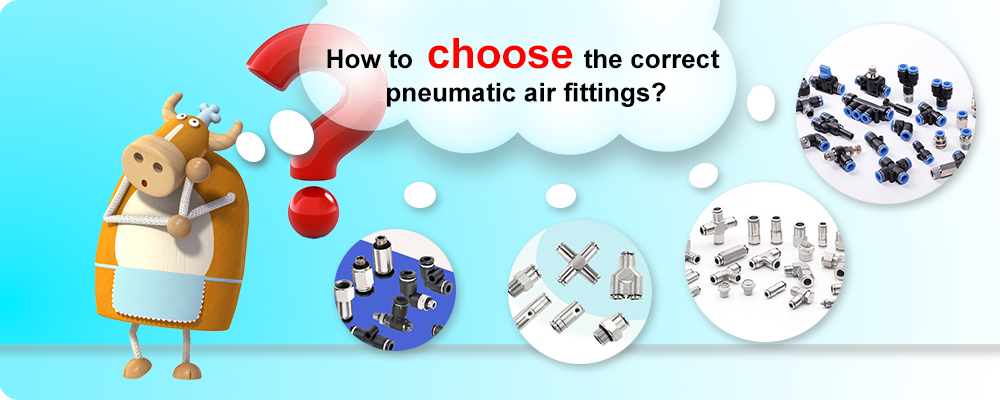
How to Choose The Correct Pneumatic Push In Fittings?
The selection of pneumatic push in fittings mainly refers to the actual use conditions and working pressure.When the working pressure is below 10bar, we can choose the regular pneumatic push in fitings with high cost performance
For 10~30bar: we recommend to choose ful brass with nickel plated pneumatic push in fittings or stainless steel pneumatic push in fittings.
When it comes to working pressure above 30bar, the integrated style of full brass with nickel plated pneumatic push in fittings are recommended. Because this structure fittings can bear much higher forces than reed style pneumatic fittings.
On some special occasions,like acid-base, alkali-base, corrosive environments or food industry, full stainless steel pneumatic push in fittings are strongly recommended.
For more information, please feel free to contact with us.


